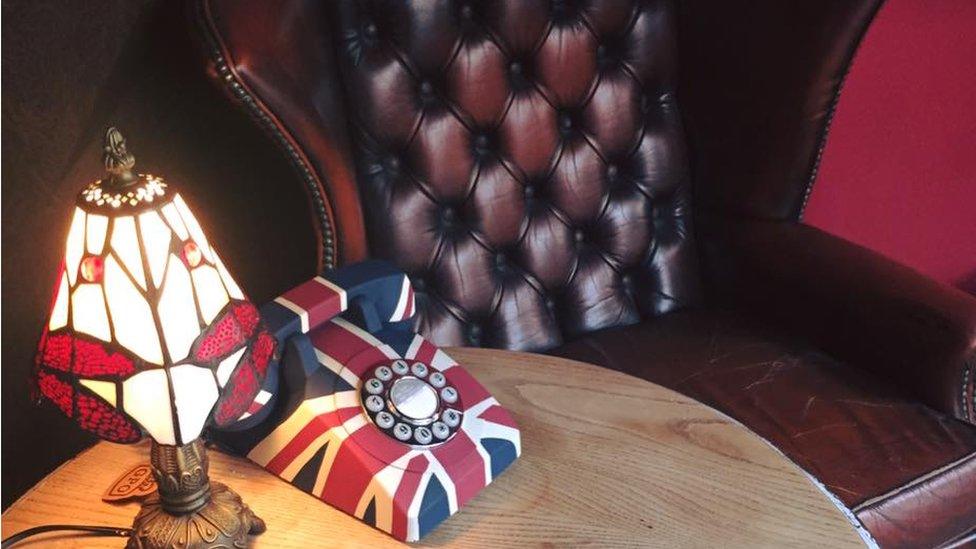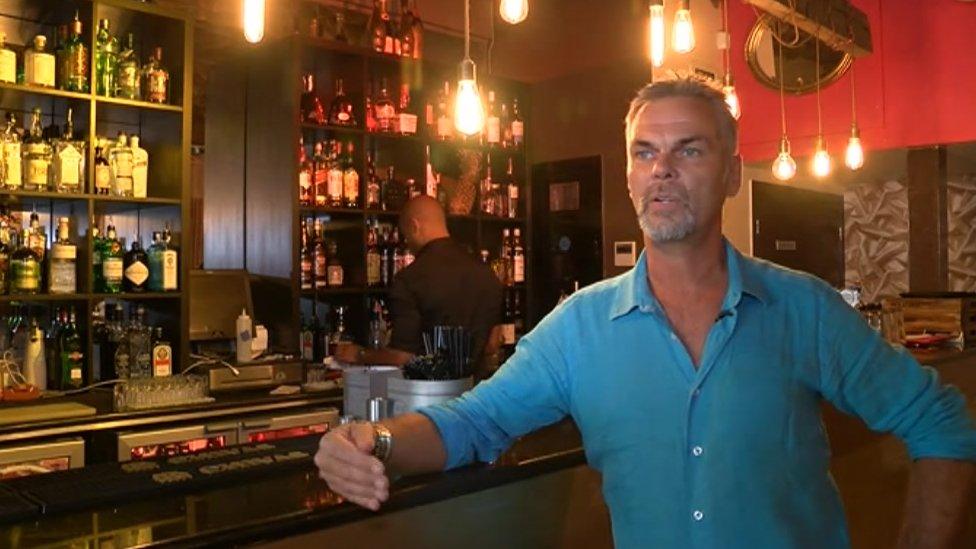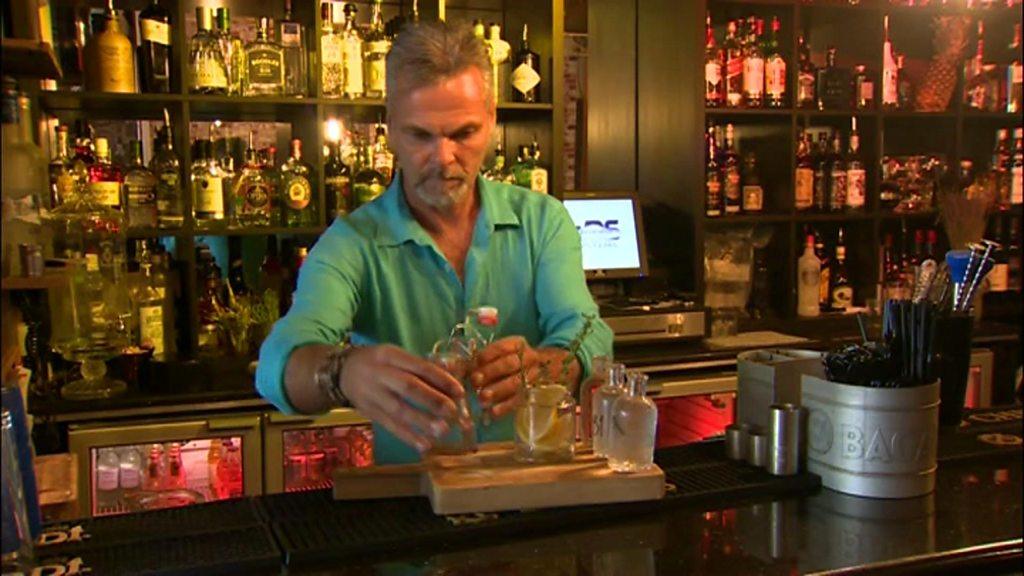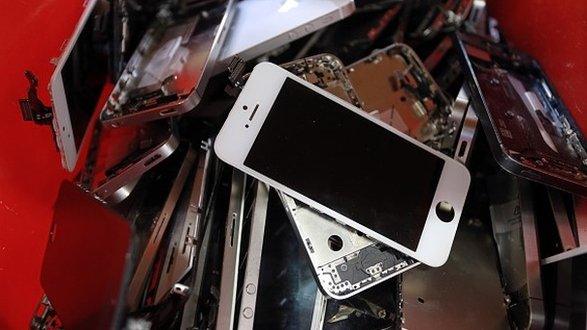Hove bar uses Faraday cage to block mobile phone signals
- Published
Bar stops drinkers using mobile phones
A new cocktail bar has blocked mobile phone signals to try to encourage its customers to stop looking at their screens and talk to each other instead.
Steve Tyler, of the Gin Tub, blames social media for "killing pubs".
He has built an electronic shield, known as a Faraday cage, into the walls and ceiling to stop the signals penetrating the building.
But, one social media expert suggested the move would not attract younger drinkers to the East Sussex bar.
Mr Tyler said he wanted to force "people to interact in the real world" and remember how to socialise.
'Isolate a generation'
"If the person you are with goes to the bathroom, the problem with mobiles is they insulate you from talking to other people," he said.
"I want you to enjoy the experience of going out."
The tables at the bar, in Hove, East Sussex, feature old-style phones for drinkers to call for another round or chat to people on other tables.
But, social media expert Zoe Cairns said: "Mobile phones are every part of our life now and if we go into a bar, a club and we are looking for our phones, it does take away that socialising aspect of it.
"But I do believe [the idea] is going to isolate that particular generation."

Customers can use old rotary style phones to order drinks or talk to people on other tables

Bar owner Steve Tyler is trying to stop his customers getting signals on their mobile phones
Mr Tyler claimed use of the cage was permitted under the 2006 Wireless Telegraphy Act, external, unlike phone mobile jammers, which transmit their own signal to prevent a handset accessing its base station.

What is a Faraday cage?
A metal construction which traps electromagnetic waves outside (and inside) the cage
It is named after 19th Century British scientist Michael Faraday
It affects any device containing a radio-frequency identification (RFID) chip, such as a passport, travel card or credit card
Such devices are only able to receive or transmit data within the cage
Cars and aircraft act as Faraday cages, external to protect occupants from being struck by lightning
Microwaves are trapped inside a microwave oven, with the metal shell acting as a Faraday cage
Source: faradaycage.org

- Published2 August 2016

- Published8 February 2016

- Published19 May 2015

- Published2 July 2013
